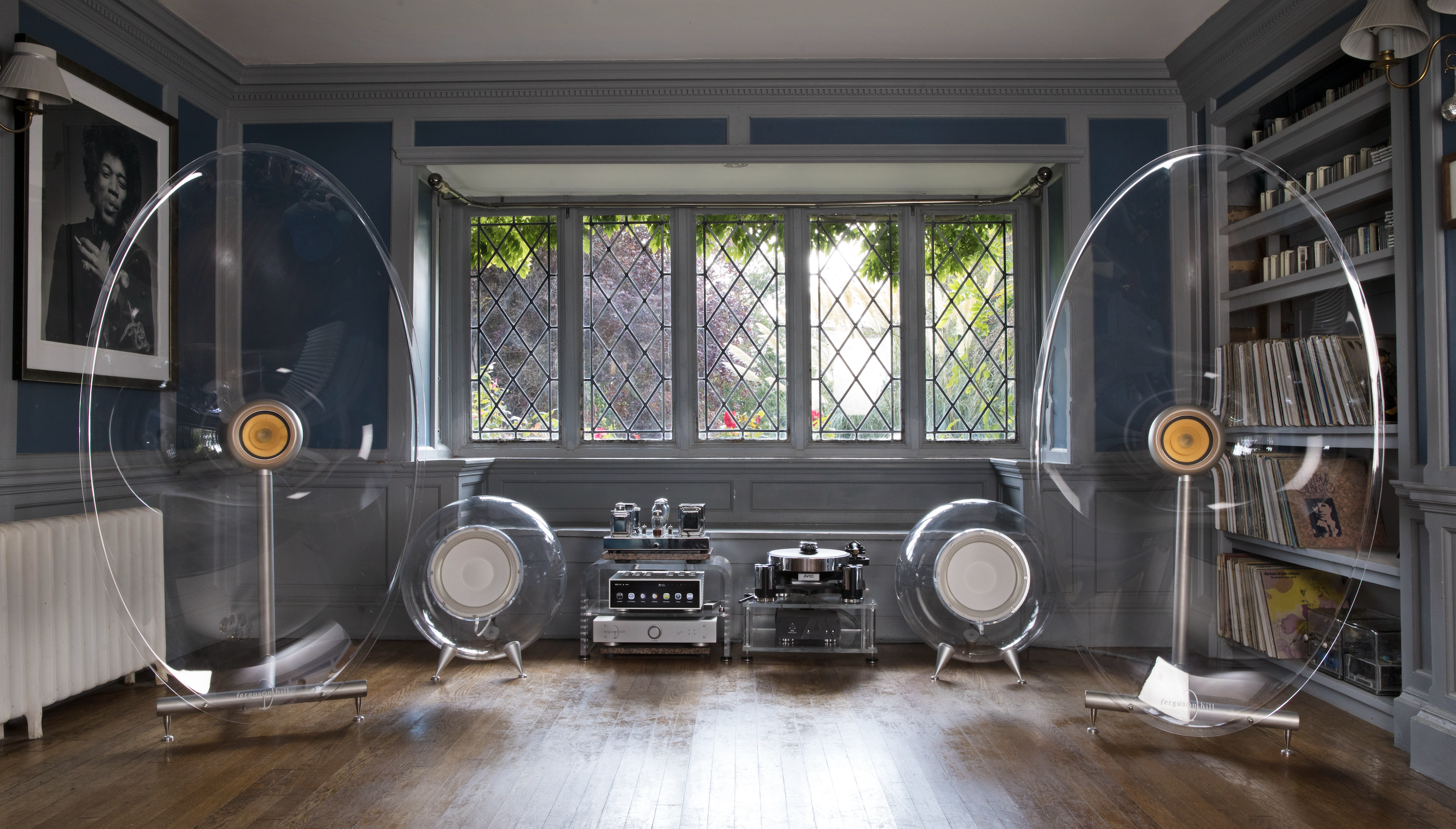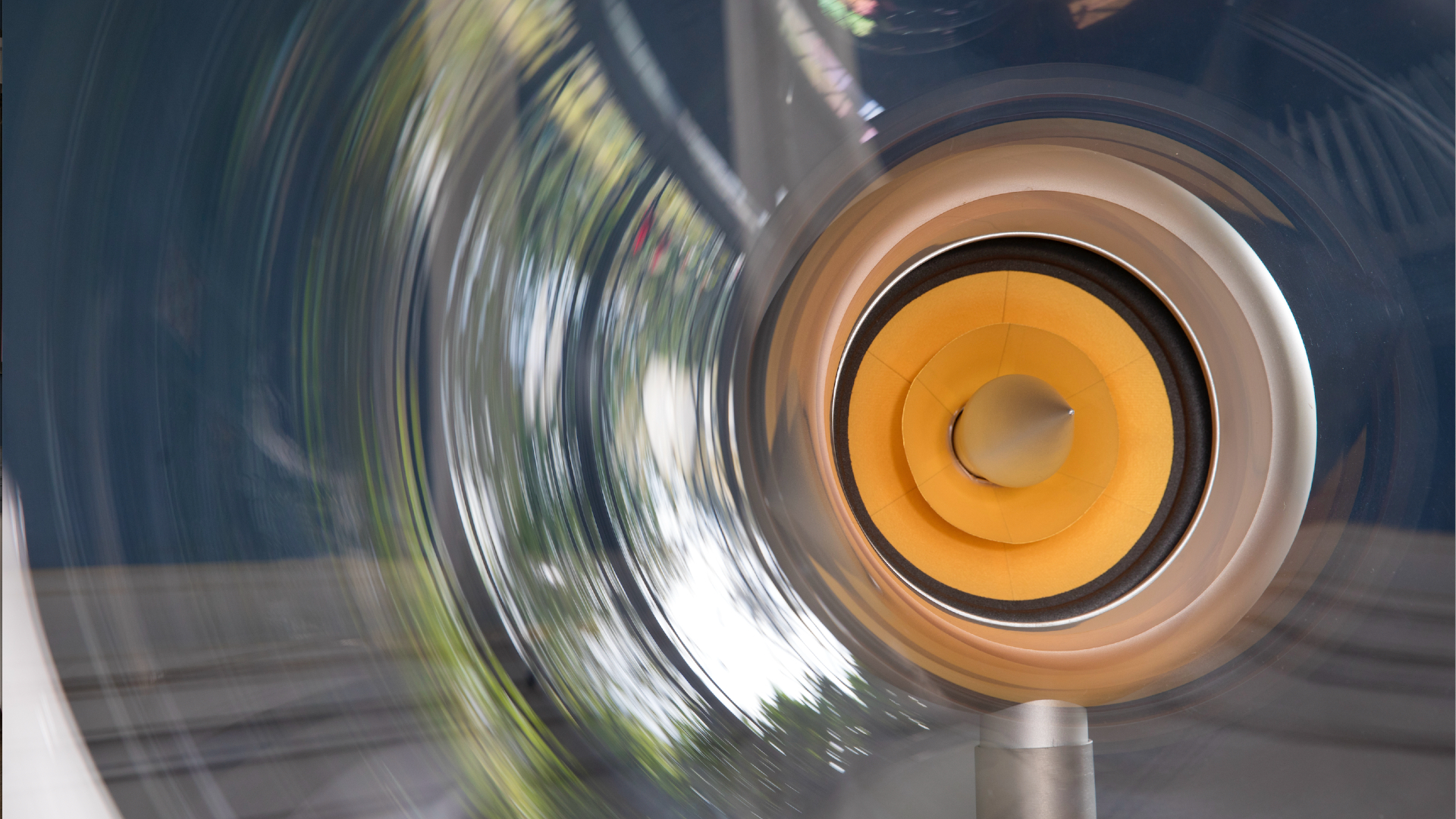This transparent horn speaker system is clearly outrageous – and I must have it
Let's be clear: Ferguson Hill's Jetstream is huge

How many times have you walked into your hi-fi listening room (which may also double as your TV room, your laundry-drying room or even your bedroom) and thought, 'man, I wish I didn't have to go around the back of my speakers to see what's behind them – in fact, I wish I just had speakers that looked like inter-dimensional time portals'?
British maker Ferguson Hill has been working on these incredible beasts for some time – since the release of the company's seminal FH001 20 years ago, to be precise. The Jetstream Loudspeaker System is, says the Kent-based specialist, its finest-ever design.
As far as I'm concerned, this is preaching to the converted – I already want this. How to describe the aesthetic? The larger horn speakers are not too dissimilar in size and shape to the Avantegrade Trio G3 speaker system I saw at High End Munich (scroll to point five), but the striking transparency makes them look otherworldly, like floating orbs or even moon jellyfish.
The full Jetstream Loudspeaker System comprises a pair of Jetstream Horn Loudspeakers, a pair of Jetstream Bass Speakers and a Jetstream Bass Amplifier. Those magnificent horn speakers feature the company's own manufactured semi-full range drive unit, created in conjunction with Cube Audio of Poland, and although a large portion of the new system is transparent, many of the improvements to the structure are internal – the dampening structures between the metal ring and the drive unit and the internal leg dampening, for example.
So come on then, how much? Well, the full Ferguson Hill Jetstream System is priced £105,200, which is around $133,385 or AU$202,530, before shipping and associated duties – and take note, each of the horn speakers weighs 32kg, so that won't be inexpensive to do. You can purchase the Ferguson Hill Jetstream Horn Speaker pair alone, too, for £72,955.00 (around $92,550 or AU$140,510 before any extras) but I think only the full set including amplification would do.
Opinion: why you need to consider horn speakers

I've said it prior to today and I'll say it again: you might think modern speakers should be driver-filled towers – two- or three-way wooden boxes containing a crossover to send each frequency to the correct drive unit – but having heard what this kind of design can actually do (see Western Electric's 1927 12B speaker, which I got to hear blast out Led Zep last year) I have to disagree.
The WE 12B snail horn used in the product above, at High End Munich, was a landmark product in audio history and although that was made from 180 pieces of hardwood and Ferguson Hill's 2024 proposition is made from transparent acrylic, the design makes sense to an audiophile – here, the horn rolls off naturally below about 140Hz due to rear wave cancellation, with the size of the horn representing a quarter of the wavelength distance at 140Hz.
Get daily insight, inspiration and deals in your inbox
Sign up for breaking news, reviews, opinion, top tech deals, and more.
Aside from not being stuck above or below other drivers in a box that needs damping and bracing to deal with resonance and interference, horns are great for sonic deliverance because they require much less power to give you loud music –otherwise known as being more efficient. Simply put, nature likes curves and waves, she doesn't like straight lines.
Look, pitting this speaker against some of the best stereo speakers we've had the pleasure of testing would hardly be fair – unfortunately most of us have a finite budget for speakers and most products in our buying guide allow for this.
What would be interesting is to hear them against the Sonus Faber Suprema 2.2 system, one of the best audio products unveiled CES 2024 and yours for a cool $750,000 / £695,000 (around AU$1.3m). Now, that would be fun…
You may also like

Becky became Audio Editor at TechRadar in 2024, but joined the team in 2022 as Senior Staff Writer, focusing on all things hi-fi. Before this, she spent three years at What Hi-Fi? testing and reviewing everything from wallet-friendly wireless earbuds to huge high-end sound systems. Prior to gaining her MA in Journalism in 2018, Becky freelanced as an arts critic alongside a 22-year career as a professional dancer and aerialist – any love of dance starts with a love of music. Becky has previously contributed to Stuff, FourFourTwo and The Stage. When not writing, she can still be found throwing shapes in a dance studio, these days with varying degrees of success.